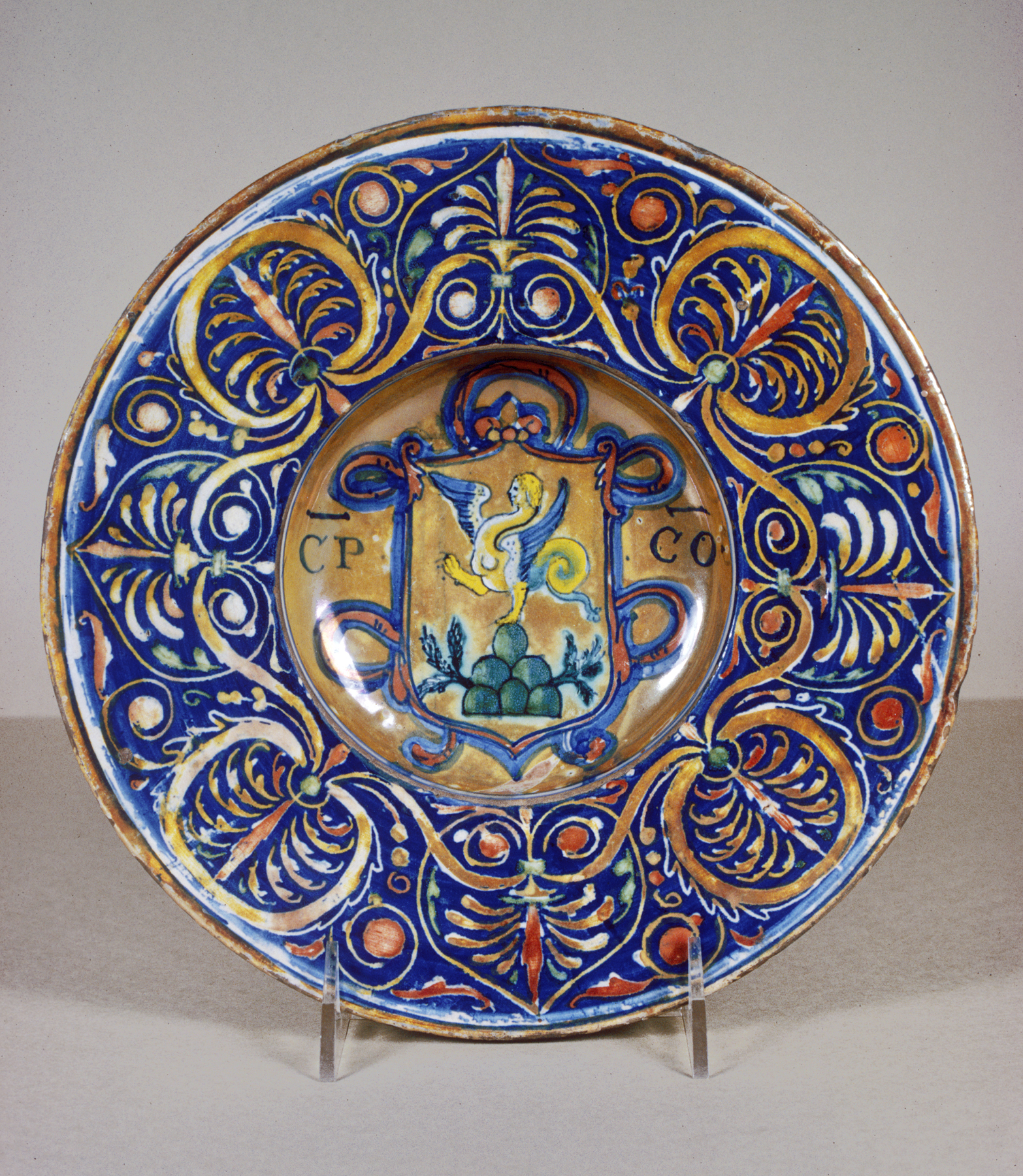Bowl with Coat of Arms
(Renaissance Europe )
The device at the center of this bowl is likely a variation of the arms of the Chigi family of Rome but the six “mountains” as a motif was used as well by the Montini. The sprays of foliage at the sides could refer to the delle Rovere family (branches of oak leaves) who were important patrons of the Chigi in the first half of the 1500s. The initials visible to the right and left of the coat of arms have not been identified, but likely belong to the bowl’s original owner.
During the sixteenth century, many families commissioned elaborate maiolica services embellished with their heraldry. The bowl’s broad rim is decorated with patterns influenced by Islamic ceramics and metal wares that were highly sought after in Renaissance Italy. The back is painted bluish-white and decorated with spirals in luster. The bowl is painted with a luster glaze, a specialty of Giorgio Andreoli’s workshop. For more information on Giorgio Andreoli see 48.1331. To view other works by the artist and his workshop, click on his name in the “creator” field. For “maiolica” in general, see 48.1336
Inscription
Provenance
Provenance (from the French provenir, 'to come from/forth') is the chronology of the ownership, custody, or location of a historical object.
Seligmann, Rey & Co, New York [date and mode of acquisition unknown]; Henry Walters, Baltimore, 1908, by purchase; Walters Art Museum, 1931, by bequest.
Geographies
Italy, Gubbio (Place of Origin)
Measurements
1 5/8 x 9 5/8 in. (4.2 x 24.5 cm)
Credit Line
Acquired by Henry Walters, 1908
Location in Museum
Not on view
Accession Number
In libraries, galleries, museums, and archives, an accession number is a unique identifier assigned to each object in the collection.
In libraries, galleries, museums, and archives, an accession number is a unique identifier assigned to each object in the collection.
48.1485


